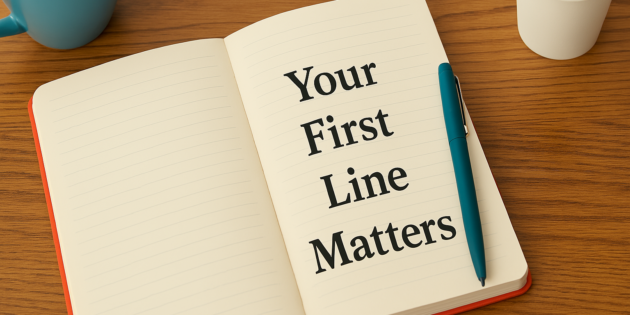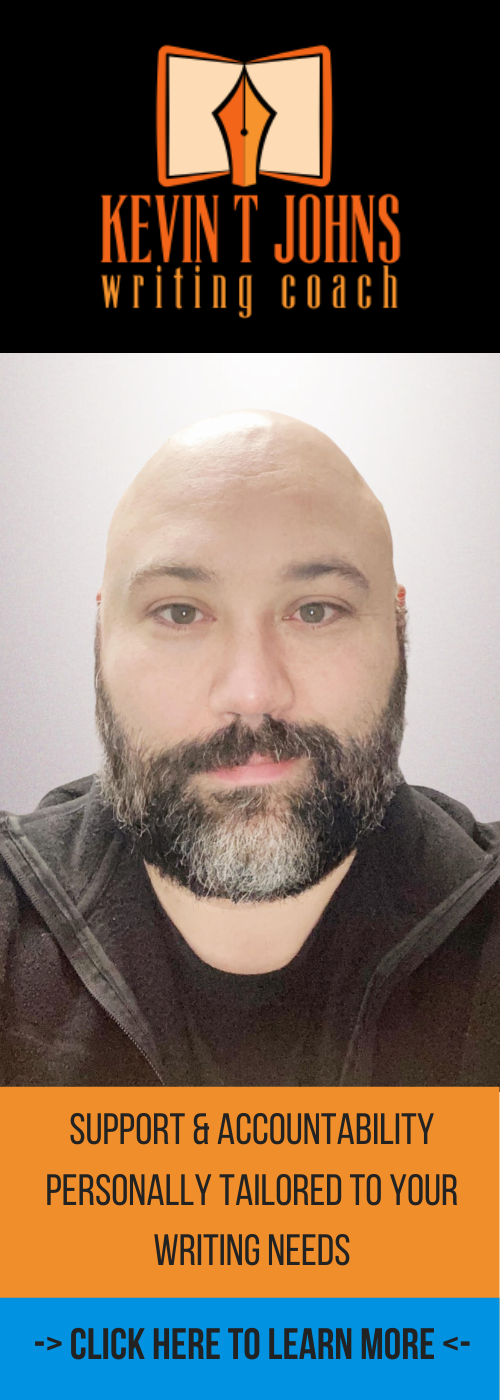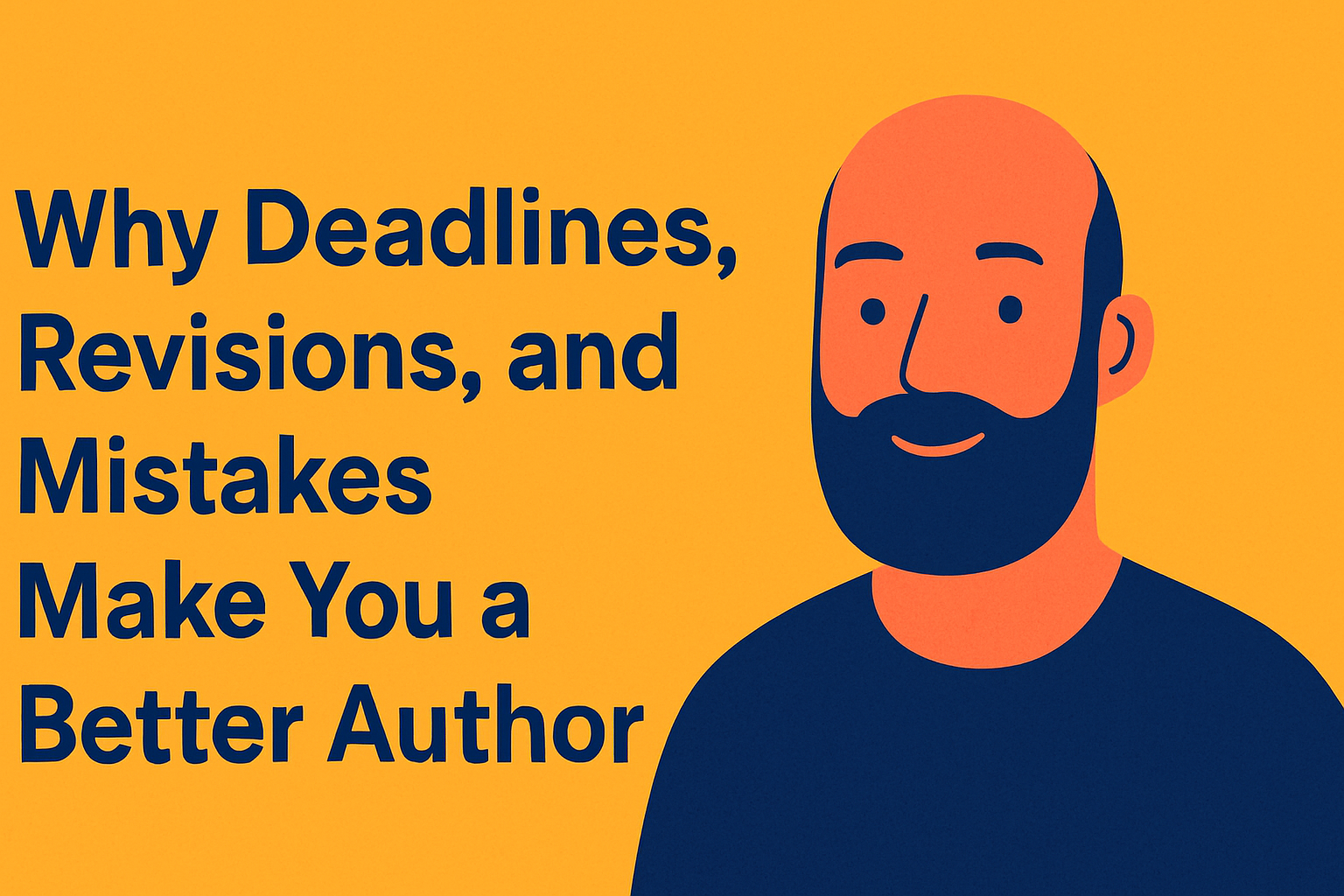Why Are Opening Lines Important?
First impressions matter. Science says so.
Studies show that when people meet someone new, they form an opinion within the first 7 seconds. That impression might change over time, sure, but it’s still there.
And it’s kinda the same with books.
The first couple of moments a reader spends with your story are huge.
Your opening line is your shot to make them sit up and go, “Oh, okay, this writer knows what they’re doing.” You want to establish that sense of trust as fast as possible. Reassure your reader they’re in good hands.
When I read a killer first line, I’m instantly thinking, “Nice. I’m in. Let’s go!”
And hey, the best opening lines stick with us. You know the ones:
“It was the best of times, it was the worst of times…” — A Tale of Two Cities
“Tyler gets me a job as a waiter, after that Tyler’s pushing a gun in my mouth and saying, the very first step to eternal life is you have to die.” — Fight Club
“Now is the winter of our discontent…” — Richard III
“It is a truth universally acknowledged, that a single man in possession of a good fortune, must be in want of a wife.” — Pride and Prejudice
“The sweat wis lashing oafay Sick Boy; he wis trembling.” — Trainspotting
“All happy families are alike; each unhappy family is unhappy in its own way.” — Anna Karenina
“The man in black fled across the desert, and the gunslinger followed.” — The Gunslinger
“You better not never tell nobody but God.” — The Color Purple
“When I was 12 years old, I put our family cat in a pillowcase and beat it against my bedroom wall about a dozen times.” — M School
“It was a bright cold day in April, and the clocks were striking thirteen.” — Nineteen Eighty-Four
“We were somewhere around Barstow on the edge of the desert when the drugs began to take hold.” — Fear and Loathing in Las Vegas
These aren’t just famous for the sake of being famous. They each set the tone, hint at theme, and deliver a big old dose of vibe. They feel like the stories they belong to. And that’s what we’re after.
What Are We Trying to Do with Our Opening Lines?
At the most basic level, your first line should make the reader want to read the next line. That’s it. That’s the job. It sounds almost too simple, but it’s the golden rule in copywriting, and it applies to fiction too: every sentence exists to get the reader to read the next one.
Beyond that, your opening line should:
• Grab attention
• Intrigue the reader
• Spark curiosity
• Introduce some kind of tension or conflict
• Set the tone
• Be written clearly and confidently
Why does all that matter?
Because we live in a world full of distractions.
Readers are scrolling TikTok, checking their emails, bingeing true crime docs, chasing their kids around the house, or all of the above.
You’ve got ONE SHOT to earn their focus.
Don’t waste it warming up or being vague.
Hit them with something specific. Something sharp.
What Makes a Great First Line?
Let’s break it down.
A great opening line makes the reader perk up. It feels fresh. Maybe it introduces an unexpected idea. Maybe it uses familiar words in an unfamiliar way. Whatever the trick, it creates what I call a “wait, what?” moment. And that’s gold.
It’s also a shortcut to the stuff readers crave. Conflict. Curiosity. Relationships. Sex. Violence. Humor. If you can tap into two or three of those in one clean sentence? You’re off to the races.
Your first line doesn’t have to be explosive—but it should hint at something juicy. Some kind of friction. Something unresolved. That little spark of tension is what keeps the reader turning pages.
And tone matters. Is your book funny? Creepy? Introspective? Wild? Your opening line is your chance to start building that emotional atmosphere right away.
Lastly: elegance. That doesn’t mean flowery or fancy. It just means clean. No extra words. No stumbles. Just a sentence that hits the mark and flows like a dream.
The Opening Line Checklist
Here’s your cheat sheet. A strong opening line should:
• Inspire the reader to read the next line
• Grab attention
• Spark curiosity
• Introduce conflict or tension
• Set the tone
• Be elegantly written (in a clear, no-fuss kind of way)
That’s your checklist. That’s the target.
When you nail all of that in one sentence? You’ve got a line readers will remember and a story they won’t want to put down.
—
Kevin T. Johns is a writing coach who helps authors craft killer first lines—and everything that comes after. Get his checklist for turning ordinary scenes into literary gold:







